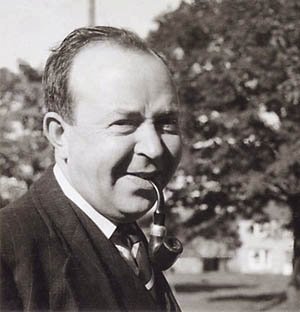The hunt was at the very heart of Fenian pursuits. Indeed, the root of
the word fian is a cognate with the
Latin venare meaning to hunt and so
the lifestyle of such a young band of warriors would wield around the chase. Of
course, what use would a hunter be without a trusty and loyal hound? Pedigree
deerhounds, and other hunting dogs besides, were (and still are) integral to
any hunting endeavour, and thus were highly prized and sought after. According
to a tradition, recorded on 24 April 1951 (and transcribed shortly afterwards)
by Calum Maclean from John
MacDonald of Highbridge, Brae Lochaber, this is the method by which the
Fenian leader chose a hound:
Mar a Thaghadh Fionn a Chù
’S e duine sgilear a bh’
ann am Fionn. Agus dh’aithnigheadh e beothach, biodh e na dhuine, na bheothach,
dh’aithnigheadh e dè bh’ ann, ainmhidh, each na mart. Agus ’s ann mar seo a bha
e a’ taghadh a’ choin:
Sùil mar àirneag,
Cluas mar dhuilleag,
Uchd mar ghearran,
Speir mar chorran,
’S an t-alt-lùthaidh fada bhon cheann.
’S ann mar sin a thaghadh e an gadhar a bheireadh air an fhiadh. Agus an
gabhar a gheibheadh tu mar sin, leumadh e air a h-uile turas as deaghaidh an
fhèidh. Mar a bha e ag ràdha, rachadh e troigh air fhichead agus nì am fiadh
fichead troigh. Agus ’s ann mar sin air a h-uile leum cha robh e a’ toirt
a-staigh an fhèidh ach troigh. Agus ghabhadh e treis ris nan d’ fhuair am fiadh
mòran air falbh.
And the translation
goes something like the following:
Thus Would Finn Chose his Hound
Finn was a skilful man and he could discern a good
man or a good beast whether it was a horse or a cow. And thus was the way in
which he would chose a hound:
Eye like sloe
Ear like leaf,
Chest like horse
Hough like sickle,
And the pith-joint far from head
That is how he chose a hound that would catch deer. This hound would leap
after a deer every time. As it is stated, it could reach twenty-one feet and
the deer only twenty feet. And every leap it took it would get closer to the
deer by one foot. And it would only take a while before the deer could get very far away.
A common proverbial phrase
relates how Finn chose a hound as given in Nicolson’s collection of Gaelic
proverbs:
Siud
mar thaghadh Fionn a chù:
Sùil
mar àirneag, cluas mar dhuilleig,
Uchd
mar ghearran, speir mar chorran,
’S
an t-alt-lùthaidh fad’ on cheann.
Thus
would Fingal choose his hound:
Eye
like sloe, ear like leaf,
Chest
like horse, hough like sickle,
And
the pith-joint far from head.
William
Scrope in his influential Victorian book Days
of Deer Stalking (1883), gives the following version of the tradition:
At
an early period, the name by which those dogs were known in these countries was
the same, viz., the Celtic one of Miol
chù, which signifies a dog for the pursuit of wild animals, through this
term is now applied generally to all dogs of the greyhound species. The
following description of the miol-chù has been handed down for generations, and
is quite as minute, and at least as old, as the well known on of the book of
St. Alban’s:―
“Sud
mar thaghadh Fionn a chù
Suil
mar airneag, cluas mar dhuilleig,
Uchd
mar ghearran, speir mar chorran,
Meadh’
leathan, an cliabh leabhar,
’San
t-alt cuil fad bho’n cheann;”
which
my be translated thus:―
An
eye of sloe, with ear not low,
With
horse’s breast, with depth of chest,
With
breadth of loin, and curve in groin,
And
nape set far behind the head:
Such
were the dogs that Fingal bred.
Such
knowledge, or proverbial wisdom, was later re-imagined in Gaelic song as can be
seen from an extract which probably dates to around the mid-seventeenth century:
An cù ’bhi’aig
Raonull-mac-Raonuil-’ic-Iain,
Beireadh e sithionn a
beinn:
Ceann leathan, eadar
’dha shuil, ach biorach ’s bus dubh air gu shroin.
Uchd gearrain,
seang-leasrach; ’s bha fhionnadh
Mar fhrioghan tuirc
nimheil nan còs,
Donn mar àirneag bha
shuil; speir luthannach lùbta,
’S faobhar a chnamh
mar ghein.
An cù sud ’bh’aig
Raonull-mac-Raonuil-’ic-Iain,
’S tric thug e
sithionn a beinn.
Ronald-son
of Ronald-son of John’s good dog,
He could
bring venison from the mountain,
He was
broad between the eyes; otherwise sharp and black-muzzled to the tip of his
nose.
With a
horse-like chest, he was small flanked, and his pile
Was like
the bristles of the den frequenting boar.
Brown as a
sole was his eye;
Supple-jointed
(was he), with houghs bent as a bow;
All his
bones felt sharp and hard as the edge of a wedge.
Such was
Ranald Mac Ranald vic John’s good dog,
That often brought venison from the mountain.
According to Nether-Lochaber, this Ranald Mac
Ranald vic John (properly Raghnall mac Raghnaill ’ic Iain) was a
celebrated hunter who belonged to Glencoe, and who was later slain at the
battle of Philliphaugh in1645.
References:
(Sheriff) Alexander Nicolson
(ed.), A Collection of Gaelic Proverbs and Familiar Phrases (Edinburgh:
Birlinn, 1996), p. 388
William Scrope, Days
of Deer Stalking in the Scottish Highlands (London: Hamilton, Adams, 1883),
p. 264
Rev. Alexander Stewart
(Nether-Lochaber), Nether Lochaber: The Natural History, Legends and
Folk-Lore of the West Highlands (Edinburgh: William Paterson, 1883), pp. 197–98
Image:
Deerhounds giving
chase by Arthur Rackham

